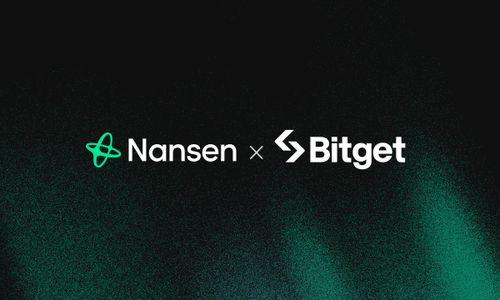Introduction
Crypto has historically been a mix of rug-pulls (fast and slow), memecoins, and speculative frenzies, but it’s also home to projects that genuinely push new models of innovation from cheaper compute power and even attempts to rebuild the internet.
DeSci (Decentralized Science) isn’t exactly new, but it caught fire late last year with the launch of projects like pump.science, where individuals could invest in tokens tied to drug research first testing longevity treatments on flies, then moving to mice, with hopes of eventually reaching human trials. What started as a promising niche quickly became another memetic gold rush, driving up prices of DeSci-related tokens until the hype cooled in late December 2024.
So what triggered the surge? In November 2024, CZ and Vitalik attended a small DeSci gathering, sparking mainstream curiosity about the sector. Interest was already bubbling, but this moment brought it to the forefront, at least temporarily.
But beyond the hype, does DeSci actually address the flaws of traditional research like funding bottlenecks, biased incentives, and limited accessibility or is it just another passing crypto narrative?
Issues With Traditional Research
Science thrives on curiosity and discovery, but today’s research landscape is riddled with obstacles. Scientists spend more time chasing funding, navigating biased peer review, and fighting for journal space than actually doing research.
Getting research money is a brutal process. Grant applications take months, yet many get rejected due to bureaucratic hurdles rather than merit. The system favors big institutions and well-connected researchers, leaving younger scientists struggling for support. Meanwhile, academic publishers profit from work they didn’t do, charging both for publishing and access while scientists even lose copyright over their own studies. This restricts knowledge and prioritizes profits over progress.
Peer review is a mess, with unpaid, overworked reviewers and an opaque process where research can be rejected for arbitrary reasons. Delays can hold back critical discoveries for years, while labs keep data secret to stay ahead of competitors. Negative results, valuable failures, rarely get published, and researchers are pushed to chase citations instead of openly sharing knowledge.
The system is broken. While open science and DeSci are emerging as potential solutions, meaningful change is still a long way off.
What is DeSci Really Solving?
The academic world has long been dominated by a centralized, bureaucratic system where funding is tied up in politics, research is shaped by corporate interests, and publishing is controlled by a handful of powerful journals that profit off the work of scientists without rewarding them. The system incentivizes quick, publishable results over long-term, groundbreaking discoveries, and researchers can often spend more time chasing grants than doing actual science. That’s the reality, for most unless they are approached by private sector players that may offer resources, data and more funding.
DeSci, in theory, aims to offer new models for funding research, making peer review more transparent, and ensuring that scientific knowledge is openly accessible. At its best, DeSci could democratize funding, break the monopoly of journals, and create a more collaborative scientific environment.
While DeSci can complement the current system offering alternative funding routes, new publishing incentives, and niche collaborative efforts it’s unlikely to replace traditional academia entirely. Government grants and institutional funding will still dominate high-budget research, and the prestige of established journals won’t disappear overnight. Regardless, at its worst, it would create more optionality for crowdfunding global research moving forward.
What DeSci really needs is a turning point not just hype, but real-world impact that forces the academic world to pay attention. We’re starting to see glimpses of this shift through projects that are pushing the boundaries of decentralized research, funding, and publishing. Some of these initiatives are already making waves, and they could be the ones that prove whether DeSci is just an idea or a true evolution in how science gets done.
Let’s take a look at some of the projects that I find to be new and interesting as well as projects that have been around for a while.
DeSci Projects
Most of the DeSci projects we're tracking have followed the broader altcoin market’s downturn, with all tokens down at least 74% since BIO’s launch on January 4th, 2025, which serves as our benchmark. Regardless of their current performance, every token released saw massive early gains, ranging from several hundred to even thousands of percent before the pullback.
HairDAO
HairDAO is an open-source R&D network where patients and researchers collaborate to develop new hair loss treatments. Despite being a widespread issue, the options on the market today remain limited Minoxidil and Finasteride are still the go-to treatments, offering only temporary solutions rather than a cure.
Why hasn’t research progressed further?
- Hair loss is complex Genetics, hormones, and immune responses all play a role, making it hard to develop targeted treatments.
- Funding is limited Since hair loss isn’t life-threatening, it often gets sidelined in drug development.
HairDAO aims to change that by incentivizing patient participation. Users earn HAIR tokens for sharing treatment experiences, which can be used for DAO governance, discounts on HairDAO products, and faster access to exclusive research data. Instead of waiting for breakthroughs, HairDAO is trying to fund and accelerate them directly.
HairDAO also launched Anagen in January 2025, a service to connect with doctors and pharmacies giving access to exclusive formulations and treatments developed by the HairDAO team, which reportedly is causing slight hair growth.
VitaDAO
When it comes to Research DAOs, VitaDAO is often the first that comes to mind. It was one of the earliest DeSci projects and gained mainstream attention after Pfizer Ventures led an investment round in 2023. Since then, VitaDAO has funded 24+ projects, committing over $4.2M to longevity and aging research.
In exchange for funding, VitaDAO acquires IP NFTs or equity in biotech startups, using Molecule.xyz’s framework for tokenized intellectual property. The DAO operates with full blockchain transparency, with its $18.4M treasury publicly accessible.
Governance is community-driven, with VITA token holders voting on funding decisions and gaining access to select healthcare services. Two of VitaDAO’s biggest funded projects, VitaRNA ($13M market cap) and VITA-FAST ($24M market cap), both hold regular calls with the DAO to report on progress.
VitaDAO is Working together with BIO to develop an AI agent that will impersonate Aubrey de Grey (famous gerontologist), providing the community with the following: “1. actionable longevity insights and advice aligned with Aubrey’s well-known reasoning, 2. live updates about the RMR2 study to keep the community informed about the development of the study and 3. growth and excitement through meme creation and shareable content”.
Data Lake
Data Lake provides researchers with tools to recruit participants, track user engagement, and manage consent workflows, all while ensuring users retain control over their data. The platform simplifies data-sharing permissions, allowing researchers to securely manage patient consent across multiple parties.
At its core, Data Lake operates on the Data Lake Chain, an L3 network built on Arbitrum Orbit, specifically designed to handle consent management in a decentralized and transparent way. By integrating blockchain, it aims to create a more efficient, privacy-focused ecosystem for medical research and data sharing.
Data lake has recently integrated Grok into their AI Consent Architect, meaning it will now be easier to create consent forms. They also launched lake.fun, a platform that connects Web3 communities with meaningful research opportunities, fostering a revolution in decentralized science. It enables individuals to participate in community-driven research projects.
For example, the MedMetrix project is the first research initiative on LAKE.fun, focusing on improving dermatological AI algorithms. Participants can explore and contribute to such projects, earning rewards in the form of LAKE tokens.
Pump.science
Pump.science is a DeSci experiment that merges drug research with blockchain speculation, allowing users to trade tokens linked to compounds being tested for lifespan extension. Built on Pump.Fun, it introduces a tokenized prediction market, where funding and trading drive early-stage scientific experiments.
The platform operates on a tiered testing system, starting with worms and advancing to more complex organisms. Tokens represent intellectual property governance rights, allowing holders to track real-time experiment data and speculate on outcomes. Some of the tokens currently on Pump.science include $RIF (Rifampicin), $URO (Urolithin A), $ART (Artemisinin), and $EGS (Epigallocatechin Gallate).
By streaming live experiment data at market cap milestones, Pump.science introduces a Web3-driven funding model for scientific research. While memetic trading dominates, it also offers an alternative funding pathway for compounds that might otherwise struggle to secure backing.
What is interesting here, is the potential for a faster commercialization of products, of which generated revenue would be used to buyback and burn tokens associated with the product.
YesNoError
YesNoError ($YNE) is bringing AI-powered scientific auditing to DeSci, using OpenAI’s o1 model to scan research papers for errors, inconsistencies, and flawed methodologies. Instead of waiting for journals or institutions to catch mistakes, YesNoError runs a decentralized verification process where the community flags and corrects issues, earning $YNE tokens in return.
The project aims to scale up, with a roadmap targeting 10,000 paper audits per day, turning it into a real-time quality control layer for scientific publishing. $YNE isn’t just for governance, it also fuels a tokenized incentive system and includes a burn mechanism to manage supply.
While it offers a novel funding and validation model, challenges like AI accuracy, regulatory hurdles, and market volatility remain. Still, as DeSci grows, projects like YesNoError could shift how research is verified, funded, and improved, making the system more transparent and resistant to bad science.
Aside from teaming up with VitaDAO, YesNoError got an upcoming beta test for a new product, which supposedly will allow for instant agentic auditing of any topic, starting with research papers.
BIO
Bio.xyz is a management and liquidity protocol for DeSci, designed to incubate and fund BioDAOs decentralized organizations supporting biotech and scientific research on chain. While its core focus is on funding and governance, Bio.xyz also plays a crucial role in standardizing frameworks, commercializing scientific IP, and ensuring liquidity for BioDAOs.
Bio.xyz was developed by the teams behind VitaDAO and Molecule, both important players in DeSci and biotech tokenization. It gained further recognition when Binance Launchpool introduced it as its 63rd project in December 2024. With its combination of funding, governance, and liquidity solutions, Bio.xyz is working to shape a self-sustaining DeSci ecosystem, where commercialized IP strengthens the treasury and reinforces its role in decentralized biotech innovation.
The BIO token serves as a meta-governance token, allowing holders to vote on which BioDAOs are accepted into the ecosystem. Once approved, token holders can participate in a private pre-seed auction, helping projects secure early funding. To sustain liquidity, Bio.xyz pairs BIO tokens with approved BioDAO governance tokens (e.g., VITA/BIO) in liquidity pools. It also runs bio/acc, a rewards program incentivizing BioDAOs as they achieve milestones. Each incubated BioDAO receives a $100K grant, with 6.9% of its token supply allocated to Bio.xyz’s treasury.
Most recently BIO had MycoDAO launch via the BIO Protocl Launchpad and as the name suggests, it aims to create a community driven platform to fund and accelerate fungal research.
Conclusion
DeSci has positioned itself as an alternative to the rigid structures of traditional research, aiming to decentralize funding, democratize access to knowledge, and break the monopolies of academic publishers. The idea is compelling given that blockchain can provide transparency, incentivized participation, and an open framework where scientific discovery isn't bottlenecked by bureaucracy. But in practice, the sector is still figuring itself out, while trying to create its breakthrough moment, needed to go from still largely being a uncertain play to a sector truly carving outs its own piece of the pie.
While some projects are tackling genuine inefficiencies whether it's VitaDAO funding longevity research, Pump.science exploring a gamified approach to drug discovery, or YesNoError using AI to fact-check scientific literature, many of these initiatives are still in their early stages. They’ve proven the concept but haven’t yet delivered a knockout success that forces the wider research community to take notice.
The reality is that DeSci isn’t replacing traditional science anytime soon. Institutional grants, academic prestige, and regulatory frameworks still dominate the landscape. What DeSci offers, for now, is an experimental playground one that could birth meaningful change but also risks becoming just another speculative crypto cycle. Whether it truly disrupts science or remains a niche experiment will depend on whether these projects can produce real-world results beyond token speculation.




